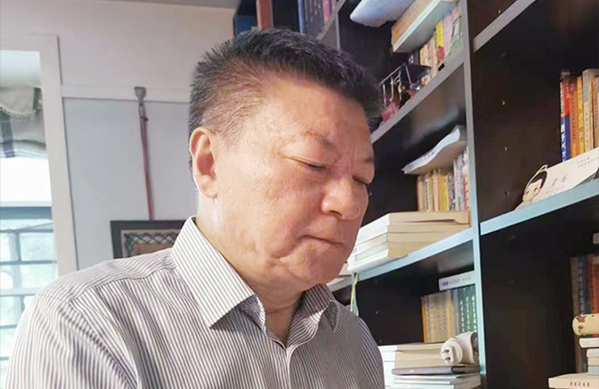The extension of the Silk Road on Qinghai-Tibet Plateau

As is well known, the “Silk Road” is a concept originally proposed by the German geographer F. Von Richthofen. It originally referred to a silk trade route from China to the West (the West here, mainly refers to the southern and western part of Central Asia and ancient India) in the Han Dynasty (202 BCE–220 CE). Later, the concept changed with the development of the times. First, in terms of the timeline, people realized that in fact, before the Han Dynasty, there had been exchanges between the East and the West starting from the Central Plain of China, so the Silk Road expanded from the Han Dynasty all the way back to prehistoric times, and forward to the Han, Tang, Song, Yuan and later dynasties; second, in terms of geographical space, it also broke through the spatial scope of the narrowly defined land Silk Road (also known as the “Desert Silk Road”). So far, however, very little consideration has been given to the Qinghai-Tibet Plateau, a geographically important and vast area in southwest China, as part of this system.
A large number of archaeological discoveries prove that the Silk Road has been extending to the Qinghai-Tibet Plateau since early times. It refers to the transport network and its main arteries of communication between the East and the West, and between China and the outside world, from the Central Plain of China through the Qinghai-Tibet Plateau. In terms of its geographical location, the Qinghai-Tibet Plateau is bordered by the Xinjiang Uygur Autonomous Region to the north, parallel to the traditional “Land Silk Road.” Connecting Sichuan and Yunnan provinces in the east, it is naturally connected to the “Southwest Silk Road” and the “Tibetan, Qiang and Yi Ethnic Corridor” in the region; to the southwest and south by Central and South Asian countries and regions such as India, Kashmir, and Nepal. In the valley between the mountains, there are a number of natural channels. The location characteristics of this geographical location determined that it should not be viewed as the “blind spot” on the Silk Road.
It has become a strong link for the Qinghai-Tibet Plateau civilization to eventually integrate into the Chinese civilization system, and it also plays a role of the transfer station and distribution center for cultural exchanges between China and foreign countries, which is of great significance. In fact, despite the hard natural conditions, people on the plateau have never stopped their communication and interaction with the outside world. They have used the plateau’s several main roads and capillaries of civil trial, wisely chosen proper seasons to avoid the cold wind and snow, making full use of the terrain and the distribution characteristics of water and grass. Thus, they have maintained the operation of these channels, and constantly developed, improved, and perfected them. Up to now, the main roads formed on the Qinghai-Tibet Plateau overlap to a large extent with the traditional roads in their general direction, major passes, and exit ports.
In terms of logic and reality, we cannot deny the historical existence of the “Plateau Silk Road” in a broad sense. It forms an integral and important part of the Silk Road network, which embodies and represents cultural exchanges between China and abroad. It became the “aortic blood vessels” that transported the civilization of the Central Plain to Tibet. It served as a transit point and distribution center for cultural exchange between China and abroad, and has become a strong link for the culture of the Qinghai-Tibet Plateau to be eventually integrated into the Chinese civilization system.
Huo Wei is a professor from the School of History and Culture at Sichuan University. This article was edited from his paper submitted to the forum.
Edited by REN GUANHONG
